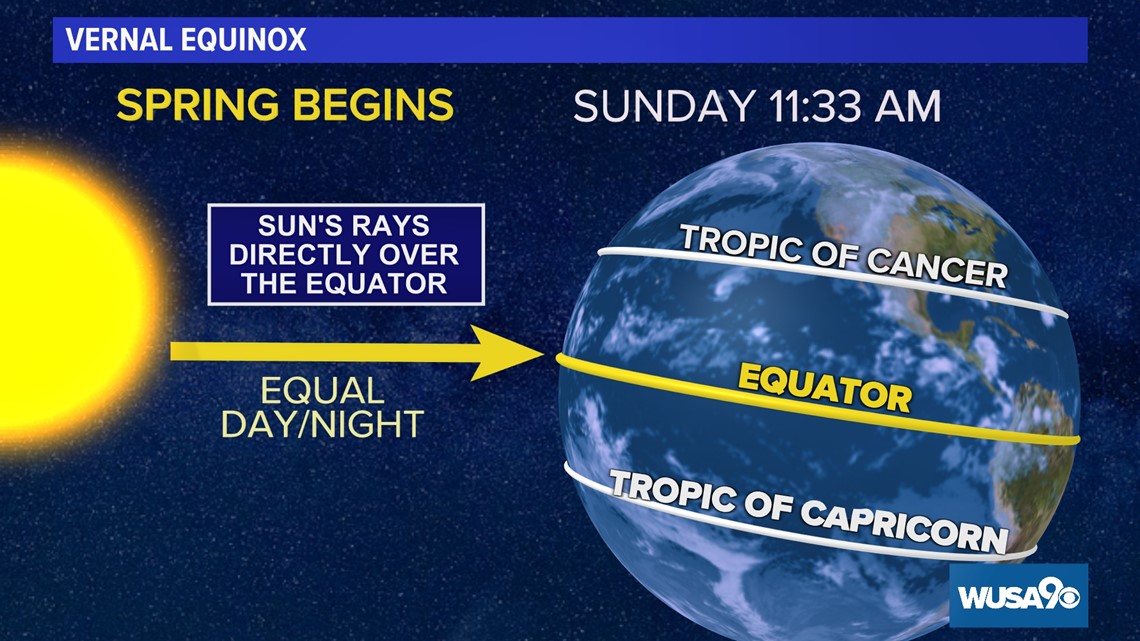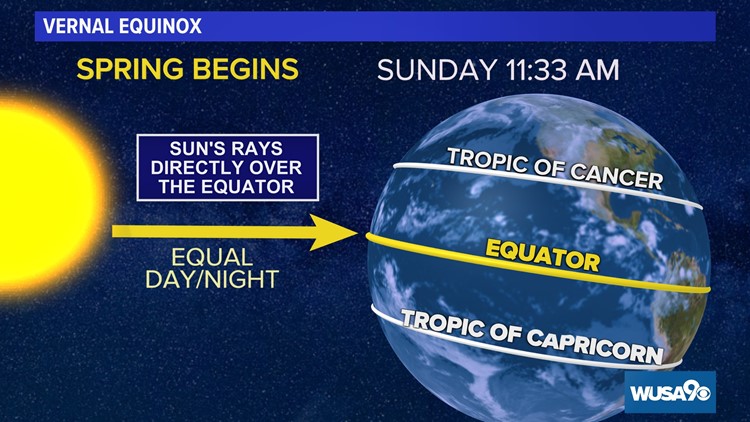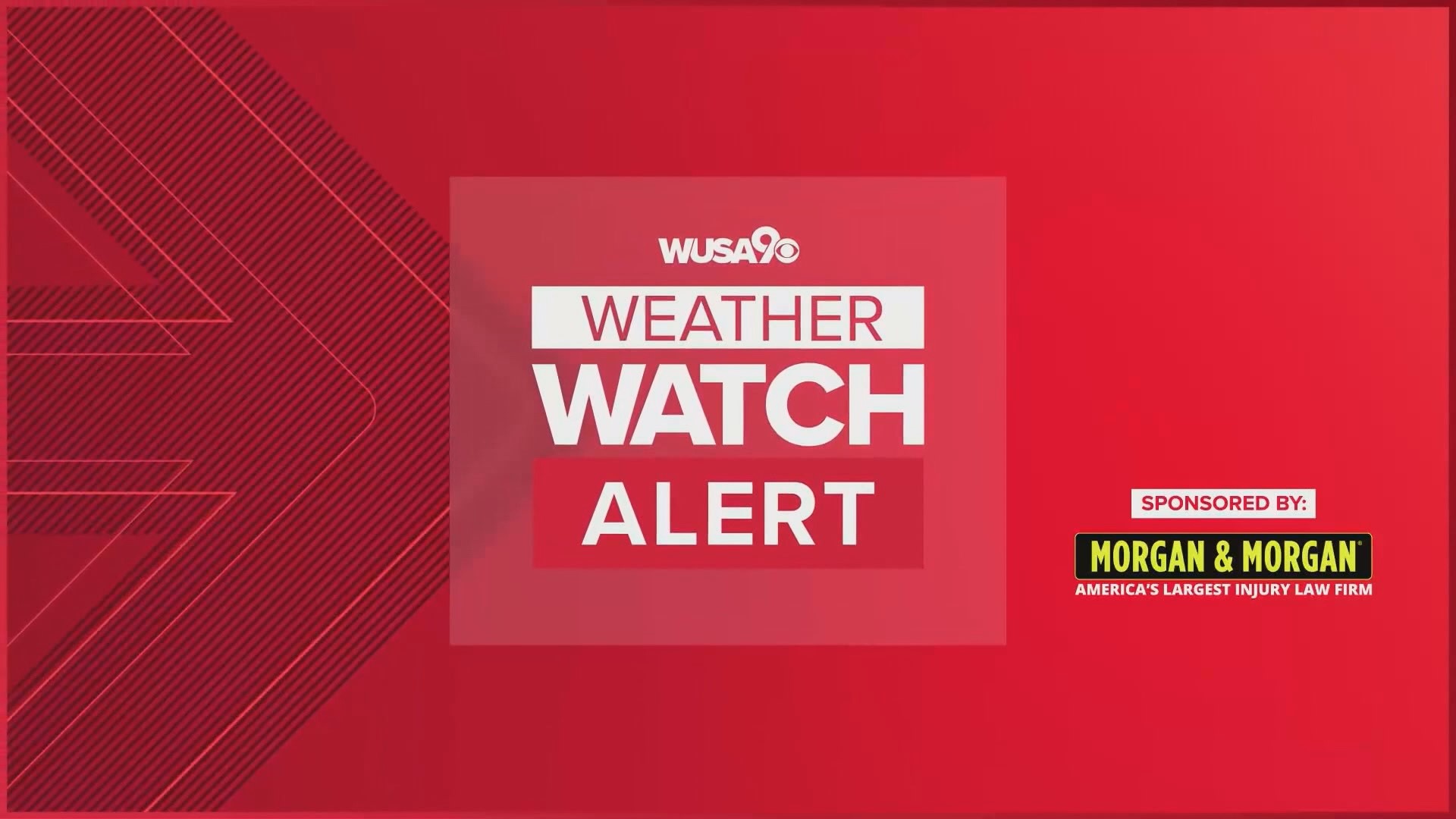WASHINGTON D.C., DC — The astronomical start to spring is just around the corner! The official time of the Vernal Equinox will be at 11:33 A.M. on Sunday, March 20.
But wait, didn’t we say spring already started? Technically, there are two starts to a season, Astronomical and Meteorological.
Astronomical spring occurs on or around March 21 each year. Astronomical seasons are based on the earth's location in its orbit around the sun. The locations are broken down into two categories, equinoxes and solstices.
The vernal and autumnal equinoxes occur when the sun is positioned directly over the equator. That means equal day and equal night in both hemispheres. On these days there will be about 12 hours of daylight and 12 hours of darkness across the entire globe. Equinoxes signifies the start of spring or fall.
Solstices occur when the earth is tilted either closest to or farthest from the sun. summer begins when the earth is tilted closest to the sun meaning winter begins when the earth is tilted farthest away. Solstices will also be the day that we either see the longest or shortest amount of daylight.


Since the earth takes 365.24 days to revolve around the sun, the exact date of the equinoxes and solstices changes. The extra .24 of a day forces us to add an additional day to the year every 4 years, making a Leap Year. The earth also orbits in an elliptical shape, which can cause the number of days in an astronomical season to change. With so much inconsistency in the start, end and duration of astronomical seasons, meteorological seasons were created.
Meteorological spring always starts on March 1 and will always end on May 31. Meteorologists group seasons into three-month periods that line up with temperatures changes and the calendar. December - February is winter, March-May is spring, June - August is summer, and September - November is fall.
Consistent start and end dates for seasons make calculating seasonal statistics much easier. From seasonal averages to climatological norms, there will never be a variation on when a season begins and ends. summer and spring will always have 92 days, fall will always have 91 days, and winter will always have 90 days (unless there is a leap year).




